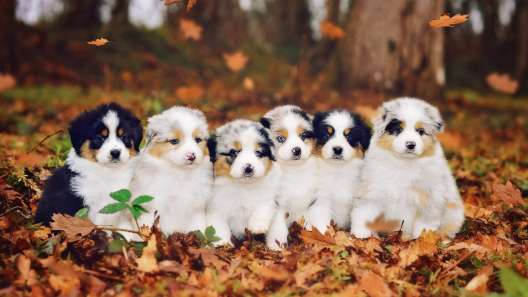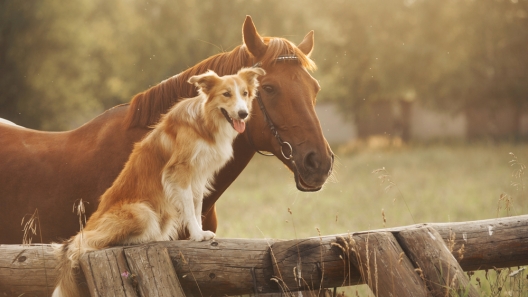-
Activity Level:
high
-
Shedding Level:
moderate
-
Grooming Level:
moderate
-
Trainability:
high
-
Good for Novice Owners:
moderate
-
Adaptability:
moderate
-
Kid/Pet Friendly:
often
-
Prey Drive:
low
-
Watchdog:
aware
- Average Size: Medium
- Average Lifespan: 12-15 years
- Registered?: aca, akc
Australian Shepherd Dog Breed Information
Overview
Temperament
Adaptability
Health
Owner Experience
Grooming
Activity Level
Size
Life Span
Did You Know?
Although this breed is called an Australian Shepherd and can trace ancestors back to Australia and Europe, one of the facts about Australian Shepherds is that they originated in the United States. The Australian Shepherd’s ancestors can be traced back to the Pyrenees Mountains between France and Spain.
This is the region occupied by the Basques who were known as world-class shepherds for centuries. The Pyrenean Shepherd was their preferred herding dog and is the ancestor of the modern Australian Shepherd. In the early 1800s, many Basques headed to Australia with their dogs to find rich pastures for cattle and wide-open space for sheep.
Along the way, the Basque shepherds further refined their dogs by crossing Pyrenean Shepherds with Collies, Border Collies, and other British imports. After shepherding and building herds in Australia, some Basques took their dogs and headed to California.
California ranchers were impressed with these new herding dogs and, assuming they were a breed from Australia, the dogs were called Australian Shepherds. It is from these dogs the modern Australian Shepherd was created in the United States. These dogs were popular on rodeo circuits and in cowboy culture.
The American Kennel Club recognized the Australian Shepherd as a member of the Herding Group in 1993. Aussies can still be found working as herding dogs in the American West and are even sometimes still rodeo performers. In addition to being beloved family companions and one of the most popular dog breeds, they also work as service dogs, therapy dogs, search-and-rescue dogs, drug detection dogs, and more.
Australian Shepherds are loving and affectionate family dogs that like to know what’s going on – and whether they can join in. As long as they are properly socialized, they get along well with children, other dogs, and other pets.
Aussies tend to feel right at home helping to herd animals, gather children, or, once trained, even pick up around the house or other jobs your dog can do at home. They may be initially wary of strangers and can be protective of their families, but they tend to warm up quickly once they are introduced.
Aussies are moderately adaptable dogs. Although they are best suited to homes with yards where they can run and are one of the best dog breeds for farms, they can adapt well to apartment living. You will just need to make sure plenty of time is dedicated every day to giving them enough exercise and mental stimulation.
Because they get bored easily and like to be around their favorite humans, they do not like to be left alone for long periods of time. Their water-resistant double coat makes them a good fit for colder and warmer climates.
As with any dog breed, they are sensitive to heat. Even though Aussies that live in colder climates tend to develop a heavier undercoat than dogs living in warmer climates, they still may need some winter dog products to stay warm on walks during the winter.
Potential health concerns to be aware of in Australian Shepherds can include epilepsy, hip dysplasia, cataracts, hypothyroidism, and cancer. They can also be prone to allergies and deafness, especially if they have the merle coat coloration. Aussies are also more prone to heterochromia in dogs than other dog breeds.
Having differently-colored eyes does not usually cause health issues, unless it is due to albinism. In Aussies with a merle pattern, heterochromia can be inherited; you just want to make sure the parents are not also passing along eye disorders. Good breeding practices make a big difference in the health of Australian Shepherd puppies.
Reputable breeders will screen their dogs to avoid passing preventable issues to puppies. Make sure you are asking about the health and genetic history of both parents. This type of transparency paired with knowledge of the breed and willingness to answer questions are qualities to look for in a great dog breeder.
You can also ask about any health tests or clearances that have been done. The United States Australian Shepherd Association (USASA) recommends an elbow evaluation, a hip evaluation, and an ophthalmologist evaluation at a minimum. Testing for hereditary cataracts (HSF4), collie eye anomaly (CEA), and multi-drug sensitivity (MDR1) are considered optional, but are also highly recommended.
Australian Shepherds are one of the smartest dog breeds. Their intelligence and eagerness to please make them easy to train and a good fit for owners of all experience levels. Their high energy can be a challenge at times for first-time dog owners, so it’s not a bad idea to be prepared for puppy training classes. As long as they don’t get bored and you can channel their energy well during training, these dogs strive to perform and exceed expectations.
Australian Shepherds have a waterproof double coat that is medium-length and may have a slight wave. Coat colors typically fall into three categories: Merle, Tricolor, or Red/Black. The Red/Black coat is characterized by a single coat color in red or black with white fur commonly on the chest, neck, and legs, and often in a stripe from the muzzle to the head.
The Merle color is characterized by dark spots or blotches on a lighter background, often creating a patchwork look. The common variations in this category include Merle, Red Merle, and Blue Merle. A Tricolor coat is characterized by having a white and tan coat paired with another solid color. The variations here are Red Tricolor and Black Tricolor.
They will shed moderately year-round and heavily during seasonal shedding. Weekly brushing or brushing a few times a week is usually enough; daily brushing is recommended during seasonal shedding and you may want to go to the groomer to help manage it. It’s also a good idea to have an undercoat rake in your collection of dog grooming brushes. Bathing is occasional and as needed.
In addition to coat care, you will also need to take care of your Australian Shepherd’s nails, ears, and teeth. Cutting nails once or twice monthly keeps them from growing too long. Checking ears weekly and carefully cleaning your dog’s ears as needed can help prevent ear infections. Daily tooth brushing and cleanings at the vet, when needed, are good dental care for dogs and help prevent dental diseases later in life.
Australian Shepherds are high-energy dogs and are one of the most active dog breeds. They need a lot of daily activity and a job to do to be happy and healthy. Daily walks plus playtime, time to run, and other activities are usually enough, but they will likely be up for more activity if you are.
These dogs are also versatile and athletic. Once puppies finish growing and their bones are done developing, you can try a variety of higher-impact activities with them. Aussies are known as one of the dog breeds that make good running partners. They also tend to be a good fit for hiking, playing frisbee or fetch, training for dog sports, and more.
Fully-grown Australian Shepherds usually stand 18-23 inches tall and weigh 40-65 pounds.
Aussies generally live for 12-15 years on average.
A famous Australian Shepherd was Hyper Hank. He performed an expertly-crafted frisbee routine with his owner, Eldon McIntire, in the 1970s.
They performed this popular dog sport and routine across the country, winning contests and gaining fame. They even performed during Super Bowl XII as part of the pre-show!









